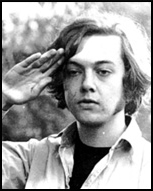Avonian Willy 450 – part 6
Categories: UncategorizedWednesday, Apr 23, 2014
WHY COULDN’T THE GREATEST WRITER IN THE ENGLISH LANGUAGE SPELL HIS OWN NAME?
Of the signatures that have come down to us, only six are believed to be in the authentic hand of …well, of whom, exactly?
William Shackper
William Shakspear
Wm Shakspea
William Shackspere
Willm. Shakspere
William Shakspeare
Not only are no two signatures the same, the Bard even spelt his name three different ways within one and the same document. The last three of the signatures listed above can be found – where else? – in his Will.
Then there is the vexed question of the marriage license on which he is called Shaxspere and she is Miss Whately while only a day or two later when friends put up the marriage bond the wedding is to be between Mr. Shagspere and Miss Hathwey.
When he signed his own name he favoured the Shakspere form, which is also the way his father’s name was usually spelt. But wherever the Bard’s name occurred in connection with the theatre and in the folios it was invariably spelt the way we know it today, Shakespeare.
Baffled of Stratford writes…
The fact that the names of the private Shakspere and the public Shakespeare were spelt differently has even led some conspiracy enthusiasts to believe that they were actually two separate individuals.
But then why stop at two when there were a hundred or so variant spellings of the name in the Tudor period?
The confusion is only in the modern mind. Shakespeare’s age had little or no notion of the need for consistent, never mind “correct”, spelling. Whether documenting affairs of state or penning a note to a loved one, the Elizabethans wrote their words much as they pleesed.
So, although he might have been flattered by the question, the greatest writer in the English language would probably have been more baffled by it than anything else.
What’s in an “e”?
With the revival of interest in Shakespeare after the Restoration, the Bard was known as Shakespear in an attempt to make him seem more modern – that final “e” was considered old-fashioned along the lines of “Ye Olde Tea Shoppe”.
By the time of his apotheosis in the mid-seventeenth century something both more reverent and more antique was preferred and the final “e” was restored while the first one was dropped making Shakspeare the new convention.
After a last ditch effort to revive Shakspere, the issue was apparently settled a mere hundred or so years ago. The Bard’s incorporation into officialdom was sealed with the full majesty of the three ‘e’s in Shakespeare, on the authority of the earliest printed versions of the plays.
By any other name?
Perhaps the final ‘e’ will be dropped once again to make him appear less ye olde barde. Or the first ‘e’ might have to go in deference to the authority of the signatures. Or perhaps Shagspere is what the future will fancy?
——————————–
Written and conceived by Frank Gabriel Perry and Gunnar Pettersson, designed by John Bury. ©1994
Acknowledgements:
APACS, Applied Holographics plc, Eric and Jean Halvorsen, F E Halliday, Charles Hamilton, Graham and Toby Holderness, William Shakespeare, Gary Taylor.

